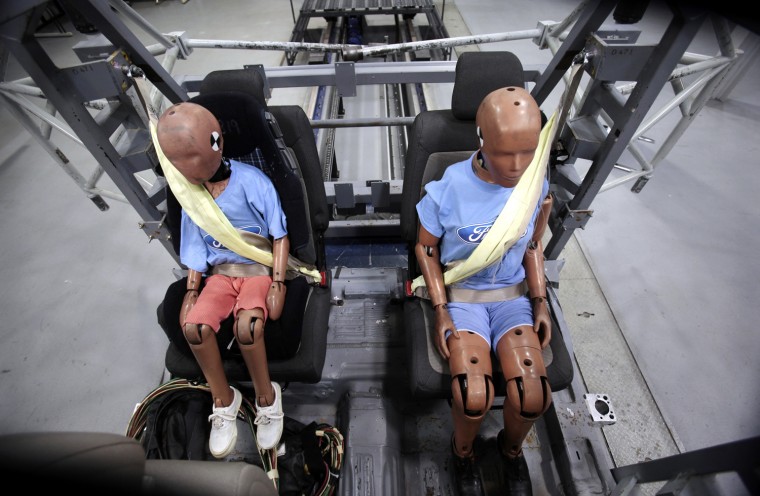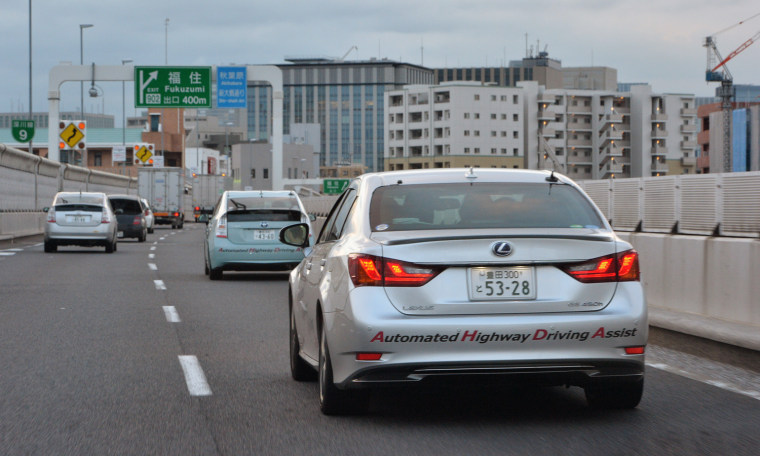Nearly a half century since seatbelts were first made mandatory in U.S. cars, experts credit those and other safety devices with slashing the annual death toll on American roadways. In fact, more than a few industry leaders and safety advocates now predict we’re approaching the day when there’ll be zero fatalities from car crashes.
We’re still likely years away from reaching that milestone, though preliminary figures show things are moving in the right direction as manufacturers press forward a two-pronged effort to advance automotive safety. Today, there are so-called passive safety systems, such as seatbelts and airbags, designed to improve your odds of surviving a crash. But the big push is in active safety, the goal to prevent an accident in the first place.
"We have a clear vision of accident-free driving," says Steffen Linkenbach, director of engineering systems and technology for the German automotive supplier Continental AG.
Credit advanced electronics – much of it based on the same microprocessing technology found in the latest smartphones – for making the latest safety technology not only possible, but increasingly affordable. Two decades ago, you’d pay a premium of as much as $2,000 for an optional electronic stability control system, designed to prevent skids, in your car. Since 2011, the technology has been mandated in all new passenger cars by the National Highway Traffic Safety Administration.
Another safety technology rapidly migrating from the luxury car market into the mainstream is known as CrossTraffic Alert. It’s designed to prevent the sort of collisions that happen every day in places like mall parking lots when you’re blindly backing out into traffic. Radar “blisters” mounted in the rear fenders of your car look left and right for oncoming traffic, sounding an alert, if necessary, to get you to wait until it’s all clear.
(Chinese Highway Fatalities Surge to Nearly 250,000 Annually)

Today’s cars increasingly feature what Dieter Zetsche, the head of the Mercedes-Benz brand and CEO of parent Daimler AG, calls a “sensor fusion,” a blend of such unblinking technologies as radar, sonar, laser, as well as cameras.
A fully-loaded 2014 Mercedes S-Class is as close as you can currently get to a true autonomous vehicle – which several makers promise to put into production by 2020. Among the features on the big Benz are Distronic Plus, which allows the S-Class to keep pace with the traffic flow, come to a complete stop in a tie-up and then start rolling again. It also will trigger the brakes if a collision seems likely and even turn on the flashers when one does occur.
The 2014 S-Class also features the latest in infrared Night Vision which will help spot not only pedestrians but deer and other animals – and will even flash a spotlight to warn people out of your path.
Collisions involving pedestrians have actually risen in recent years, perhaps because of the distractions caused by texting and cellphoning. Whatever the reason, manufacturers are introducing a growing number of safety systems to help prevent such accidents. Volvo pioneered such technologies with its City Safety system. The latest version will alert the driver if not only a vehicle, but even a pedestrian or a large animal walks into the vehicle’s path. At speeds of up to 25 mph, such systems can automatically apply the brakes if the driver doesn’t react fast enough.
Meanwhile, Infiniti, the luxury arm of Japanese maker Nissan, now offers a rear pedestrian alert system on its QX60, the latest version of its older JX35 3-row crossover-utility vehicle.
(Forget Those Old Econoboxes; Hyundai Wants to Sell You Luxury Cars)
A number of insurance companies now offer discounts for cars equipped with these collision mitigation systems and the Insurance Institute for Highway Safety recently began rating the versions offered by different manufacturers – which you can check out at the website: http://www.iihs.org/iihs/news/desktopnews/iihs-issues-first-crash-avoidance-ratings-under-new-test-program-7-midsize-vehicles-earn-top-marks-for-front-crash-prevention
A growing number of new models now are offered with rearview cameras, despite the delay in implementing a proposed mandate by the National Highway Traffic Safety Administration.
Cameras of all sorts are improving safety on the 2014 models. Subaru’s EyeSight system uses a pair of stereoscopic cameras mounted on the windshield, just above the rearview mirror, to control seven different safety features, including Pre-Collision Braking, Lane Departure Warning, Active Cruise Control and Pre-Collision Throttle Management, among others.
The approach makes it easy and affordable to combine so many features, explains vehicle line director Dave Sullivan, who says the Japanese maker plans to “eventually…offer this in every car line” it sells in the U.S.
Honda, meanwhile, is offering a new blind spot detection system on several models, including the Accord, that relies on a camera to track traffic your mirror might miss on the passenger side of the vehicle. The image is displayed on a screen at the top of the center console.
(Small Cars, Big Price? Compact Crossovers Defy Conventional Wisdom)
Blind spot detection using radar and other sensors has become a widely available option across the industry these days. So has lane departure warning that will alert a driver who might inadvertently drift across the double-yellow lines. The new Infiniti Q50, offers a new steer-by-wire system that can actually hold your lane even if your hands are off the wheel for a moment.
While active safety systems are where most of the big breakthroughs are occurring, makers haven’t forgotten passive safety. The new Chevrolet Malibu now offers 10 airbags. Parent General Motors even has introduced a new airbag system to keep front seat passengers from bumping heads in a side-impact collision.
Ford, meanwhile, is expanding the use of a new seatbelt with a built-in airbag. It’s now found on models such as the Explorer and is designed for rear seat passengers, especially young children and senior citizens who are especially vulnerable to injuries in collisions.
While the vision of a crash-free world is still years away from reality, the new 2014 models introduce a range of technologies that should reduce your likelihood of an accident – and improve your odds of surviving if you do have one.
